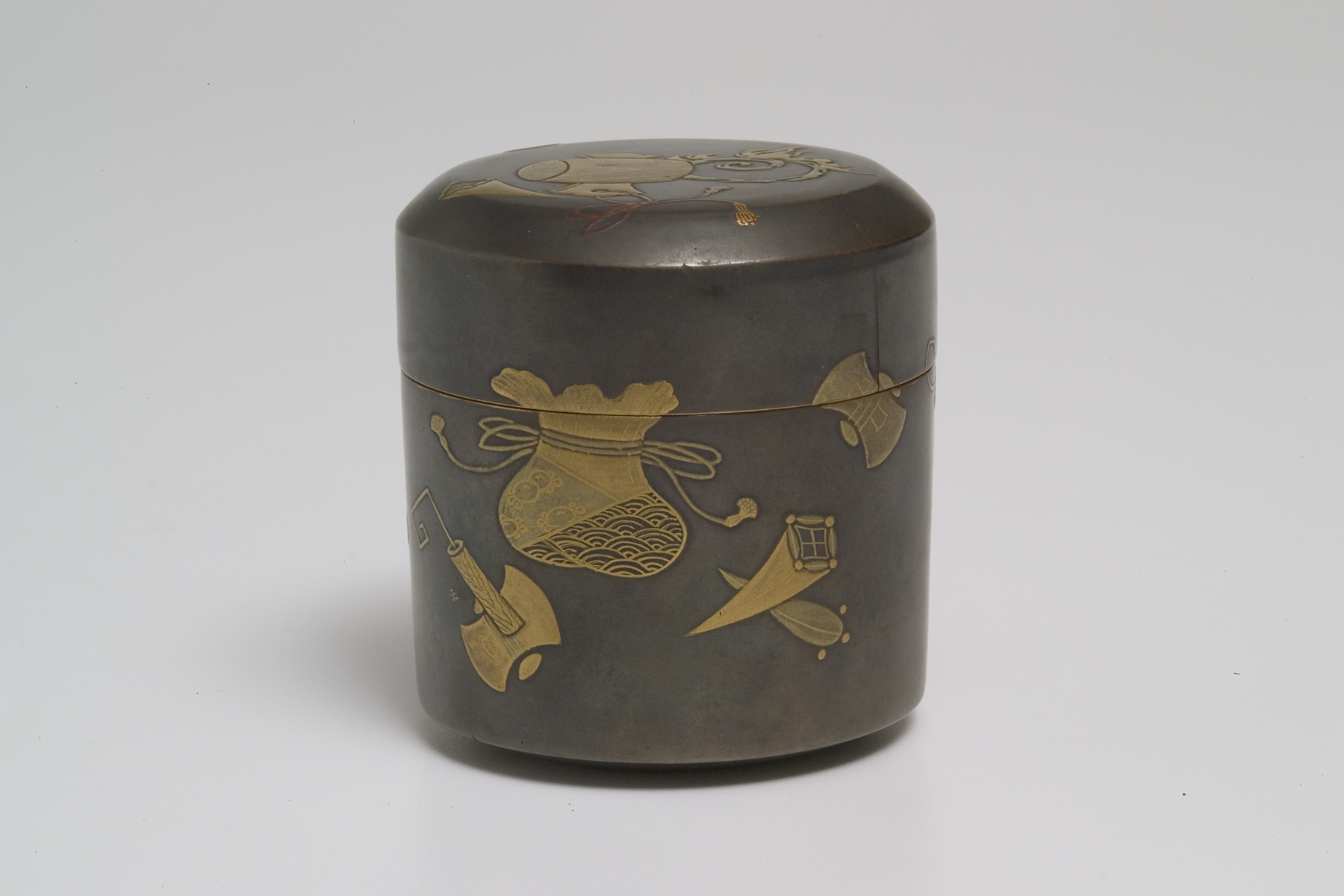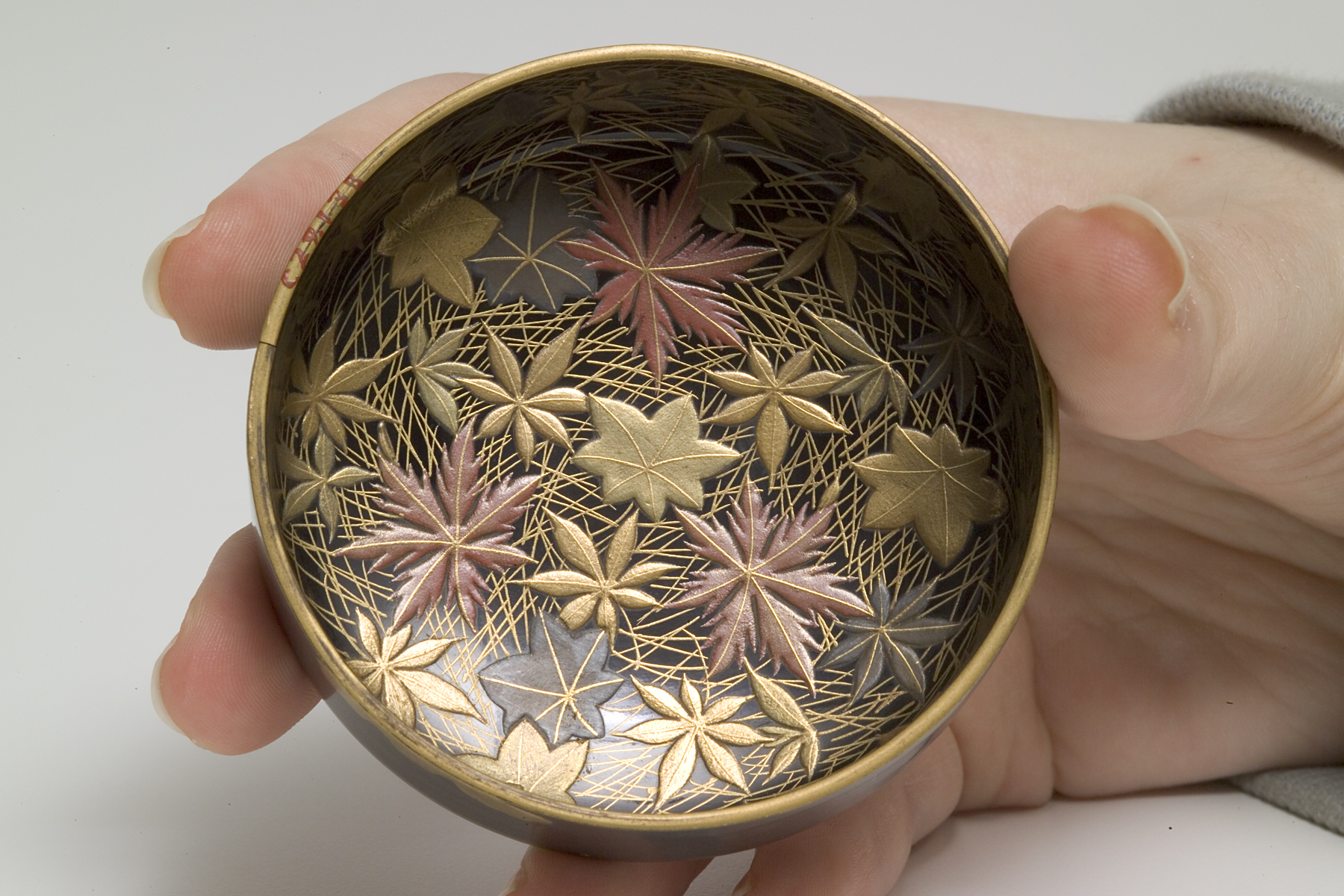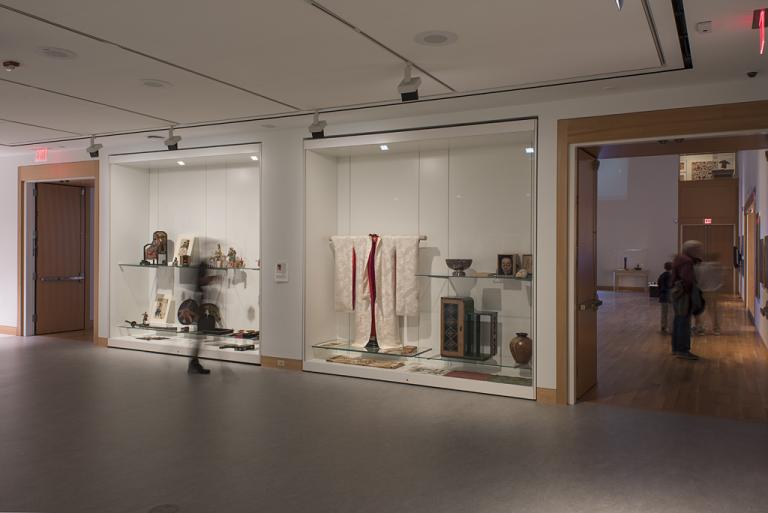棗 natsume (tea caddy), unknown maker from Japan
Artwork Overview
棗 natsume (tea caddy)
, late 1700s–early 1800s, Edo period (1600–1868)
Where object was made: Japan
Material/technique: lacquer; wood; gold; lead; silver
Dimensions:
Object Height/Diameter (Height x Diameter): 7.3 x 6.9 cm
Object Height/Diameter (Height x Diameter): 2 7/8 x 2 11/16 in
Object Height/Diameter (Height x Diameter): 7.3 x 6.9 cm
Object Height/Diameter (Height x Diameter): 2 7/8 x 2 11/16 in
Credit line: William Bridges Thayer Memorial
Accession number: 1929.0013.a,b
Not on display
If you wish to reproduce this image, please submit an image request







